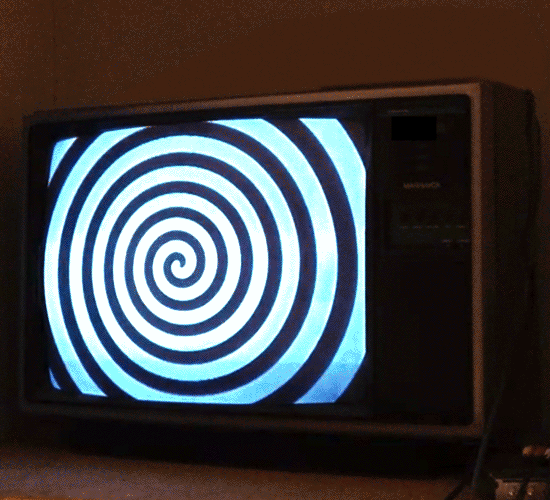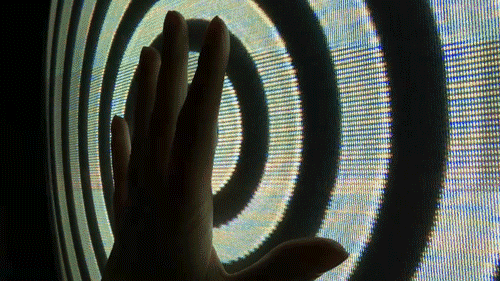Text
HOW EXACTLY TO Hypnotize Someone (Powerful Techniques)

When you see hypnosis, perhaps a vintage black and white movie with a villain swinging a pocket watch involves the brain. Do you think hypnosis could work? Experts say that thinking is fifty percent of the procedure.
The history of Hypnotism
Because it is surrounded by many misconceptions and myths, this issue of hypnotism is highly controversial. Despite conclusive medical research and its popular medical use, many people are frightened by hypnotism, addicted to the stigma around it. To breakdown some of these ideas, we will walk you through a brief overview of the roots and development of hypnotism.
Did you know hypnotism 's been around in America because of the mid-1800s? You may be surprised to learn that its roots go dating back to historic historical times. Inseparable from traditional western medication and mindset, proof its use are available in Sumerian, Persian, Chinese language, Indian, Egyptian, Greek, and Roman ethnicities. The famous Sanskrit publication regulations of Mandu identifies many degrees of hypnosis, including “Dream-Sleep”, “Sleep-Walking”, and “Ecstasy-Sleep.”
During the DARK AGES, kings and princes were widely thought to have the energy of curing, also called the ‘royal touch.’ It is documented that they performed miraculous healings called ‘magnetism’ or ‘mesmerism.’ The 16th-century doctor Paracelsus was the first person to use magnets as a kind of healing. This technique of healing recognition, carrying into the 18th century.
It had been then that the Austrian Doctor Franz Mesmer found out that he could incite a trance without the utilization of magnetic pressure. Mesmer incorrectly figured the healing capabilities came from a low profile force in addition to the magnets. You might have noticed someone say something was mesmerizing?
Mesmer was the first ever to describe a ritualistic way for hypnotism, which he passed on to his fans who continued to build up the method. Regrettably, Frank Mesmer is also the key reason why we've such a mystical view of hypnotism, as he previously some rather unusual and elusive methods to his methods, such as putting on a cloak and playing unusual music through the ritual.
Other doctors believed that hypnosis wasn’t a magical power, but an extremely useful trance that opened your brain. Even still, the introduction of hypnosis continued without Mesmer’s unusual ways, and throughout the background, many have believed hypnosis to be a highly effective psychological solution to many ailments of the mind and body. Viewing the potential of hypnosis in the medical field, a few significant doctors risked their medical licenses to pioneer its use in their procedures.
In 1813, a priest named Abbe Faria started to analyze the validity of hypnotic techniques. He suggested that it had not been magnetism or some outside push that triggered a trance but instead the subject’s brain. Faria’s strategy created the building blocks for the theoretical and scientific work of the French hypnosis-psychotherapy college, Nancy College (also known as the institution of Recommendation).
Ambroise-Auguste Liebault, the creator of the Nancy College, believed hypnosis was a psychological trend and disregarded the theories of magnetism. He concentrated his studies and hypnosis training on the relationship between being asleep and going through a trance. He figured hypnosis is the circumstances of mind made by suggestion. Out of this theory, he released Sleep and its own Analogous Says in 1866. His work drew lots of the prominent pioneers of mindset to review at the Nancy College.
you may also learne more here: www.igorledochowskihypnosis.com
Included in this are Sigmund Freud, Pierre Janet, and Hippolyte Bernheim (who visited his clinic).
During the top of hypnotic studies, many physicians used hypnosis for anesthesia. In 1821, Recamier became well-known for utilizing a hypnotic trance on an individual for anesthesia in a significant procedure. Thirteen years later, the English doctor John Elliotson (who launched the stethoscope to Britain) reported multiple pain-free surgeries using hypnosis.
Taking over a hundred years to take action, doctors and researchers finally could take away the stain Mesmer remaining on the practice of hypnosis, exposing it as a valid clinical technique. By the finish of the 19th hundred years, private hospitals and medical colleges were discovering and applying hypnosis with studies and patients for a bunch of medical anomalies.
Despite having many predecessors in his field, it's the Scottish ophthalmologist Wayne Braid who's credited as the ‘dad of modern hypnotism.’ He was the first-ever to coin the word neuro-hypnotism (meaning anxious rest). This term was shortened to hypnotism in 1841. Within the next hundred years, the utilization of hypnosis proliferated and was integrated into medical practice for quick treatment pursuing WWI and WWII.
After centuries of documentation and development, modern tools helped uncover reality. By using brain imaging, doctors and experts could see that hypnosis is its condition. It isn't a trance, neither is it vacant. Instead, it is a genuine mindset where the subject matter is very available to change and taking new ideas, something our very mindful condition has been trained to filter.
Is Hypnosis Backed by Technology Today?
From reading about the annals of hypnosis, you have discovered that it's something of scientific inquiry. We realize that hypnosis works. But what exactly are the implications for a hypnotic program today? The Director of this program in Placebo Studies at Harvard Medical College, Irving Kirsch, has this to state: “There are numerous common myths about hypnosis, mainly via press presentations. ” Aside from these preconceptions, hypnosis is a well-studied and proven approach to treatment for conditions which range from stress to choosing healthy lifestyle practices.
With regards to weight loss, Kirsch’s team uncovered that those patients who few cognitive behavior therapies (CBT) with hypnosis lose a lot more weight than those who do not. Carrying out an amount of 4-6 weeks, those patients who used CBT with hypnosis lost more than twenty pounds while those only using CBT lost ten pounds. Furthermore, the hypnosis-tested group managed that weight reduction for eighteen a few months thereafter whereas the other group didn't.
Besides aiding weight reduction, there is proof that demonstrates that hypnosis works well in short-term pain relief. Len Milling, a teacher at the university or college of Hartford and medical psychologist, figured hypnosis may help reduce post-surgical pain in children and pain related to other surgical procedures.
Stanford University College of Medicine’s Doctor David Spiegel, a hypnosis expert, and teacher of psychiatry and behavioral sciences had some interesting information to include as well. He said: “Fifty percent individuals I see once stop [smoking], half of this won’t touch a cigarette for just two years.” His declaration is supported by the Smoking & Cigarette Research’s 2007 research, where over 20% of 286 patients stop smoking after hypnotic treatment whereas only 14% stop through regular behavioral counseling. The hypnotic treatment was especially successful in patients with a brief history of depressive disorder and panic.
However, pinpointing just how hypnotherapy is prosperous is tricky. If you ask ten different certified therapists how it works well, chances are that you'll get ten completely different answers. One thing that a lot of skillfully developed can acknowledge though is that the procedure of how to hypnotize someone occurs in two phases. The first stage is also known as induction. The second stage is the recommendation.
Through the hypnotic induction, patients tend to be informed to relax. The physician will inform them to target their attention and they 're going into hypnosis. The suggestion phase entails subtly proposing suggestions to the individual to help them address or solve harmful behaviors or feelings. Patients receive situations to help them imagine hypothetical situations as if these were real. The types of recommendations and prompts given vary by the kind of patient and their specific treatment needs.
In lots of ways, hypnosis can be in comparison to mindfulness practices and techniques since it prompts the individual to get into a deeper state of introspection. Spiegel says: “Some people fear to drop control in hypnosis, it is, in truth, a way of improving mind-body control.”
The Condition of Hypnosis Today
Nowadays you can attend seminars for smoking cessation to overeating. But do they work? If the scientific research and recorded improvement of hypnosis have anything to state about the topic, then yes, an individual can be positioned in a hypnotic condition to improve their mind in regards to a habit. This is the part where experts say you have to trust in the capability to be hypnotized, to begin with. Otherwise, your mindful condition will thwart any work to go your brain into a hypnotic condition. A hypnotic condition can help you enter an even of consciousness that your mindful condition cannot achieve, therefore uncovering your mental roadblocks and letting you be more available to the ways around them.
FOCUSING ON HOW Hypnosis Works in the Conscious Brain and Subconscious Brain
The principal principle of hypnosis is that we now have ways to gain access to and influence the subconscious brain. Through the induction period, the majority of this impact occurs through conversational hypnosis. For instance, the individual being hypnotized may consciously make an effort to relax, concentrate on their deep breathing, and recall information. However, by doing many of these things, your conscious brain is employed in coordination with the unconscious mind to be able to gain access to the area of the brain that solves problems and formulates programs. Whenever a new idea pops into your mind, for the reason that it has come up with unconsciously.
Your unconscious is accountable for all the procedures you do this does not require concerted thought or work. Your subconscious brain is exactly what directs the majority of your thought procedures. Your conscious brain evaluates your ideas to make decisions and do something. It also procedures new information and that means you can relay it freshly. Psychiatrists theorize that rest and concentrating techniques work to relaxed the conscious brain. In so doing, therefore it assumes a less energetic role in your thought procedures. During this mind-set, you remain aware of the proceedings, but your mindful brain requires the backseat.
So How Will One Hypnotize a Person?
First, You should know About Informed Consent
Perhaps you have ever pondered how to hypnotize people for magic take action? Before we enter the facts to help you figure out how to hypnotize, we should address this issue of educated consent and hypnotherapy. This term identifies the receiver providing the hypnotizer or hypnotherapist authorization to execute the take action.
You tend alert to the act of giving consent throughout many days to day activities in life. For instance, when you attend your hairdresser, you tell them how much locks to cut and what style you desire. When you go to the doctor, they clarify the visit and any procedures that you may need, including security concerns and guidelines. Informed consent is reassuring because you understand that you'll have sufficient information to make a smart decision that is within your very best interest.
With this thought, it's important to identify the rights and well-being of the receiver of hypnotherapy. Common internet queries including ‘how to hypnotize someone without them knowing,’ how to hypnotize you to do what you would like, and ‘how to hypnotize someone instantly’ are very disconcerting.
Inside the field of hypnotherapy, three types of consent are essential to discuss. There is certainly implied, explicit, and up to date consent. We’re here to breakdown these ideas in a straightforward way.
Implied, Explicit, and Informed Consent
As the word suggests, implied consent is one that is not explicitly mentioned by your client but instead indicates their acceptance via an action (e.g. shaking hands). Explicit consent is documented by verbal or written approval by the receiver. Finally, educated consent is one step before explicit consent. It requires the hypnotist straight asking your client if they're willing to endure hypnosis plus they say yes. This means that your client has received sufficient information and it is making the best decision. Ensure that you have up to date consent if you want to learn how to execute the work of hypnosis (vision contact is important). Never attempt covert hypnosis.
Now the procedure of Hypnosis Starts with Meditation
Now that you understand about consent, let’s begin by learning about yoga. This is the practice of removing all competing sounds and energies around you and calming all of the body and brain to gain a definite perspective. Some individuals say they feel lighter during deep breathing; that it's like emptying the rubbish drawer in your kitchen, and they feel less pressured after a program. They can process deep thoughts after yoga easier. However, through the process of deep breathing, there are practically no thoughts at all. Yoga clears your brain of thoughts and frees your body from the strain of transporting them.
Meditation can be considered a relaxing tool or a preparatory action. Once in circumstances of yoga, a person may continue into prayer (religious trip), self-help, or psychoanalysis. Yoga is effective in removing dread before a predicament and reducing stress after a predicament. That seems easy enough to comprehend, right? Some respiration exercises and mindfulness is all it requires.
Clearing your brain of stressful thoughts and harmful ideas is imperative for achieving a hypnotic condition. One must recognize that a hypnotic condition is not a cure alone; it's the door you open up and walk to accept recommendations and images that help reach a remedy or relief. Through the condition of hypnosis, your fast-wave brain activity, used for considering and control, lowers, and slow-wave brain activity, used for rest and concentrate, increases greatly.
0 notes






